'This is the funnest exhibition London has seen in recent memory': Grayson Perry’s new show at the Wallace Collection explores the delusions of a fictitious woman
'Delusions of Grandeur' at the Wallace Collection coincides with a selling exhibition of photography.

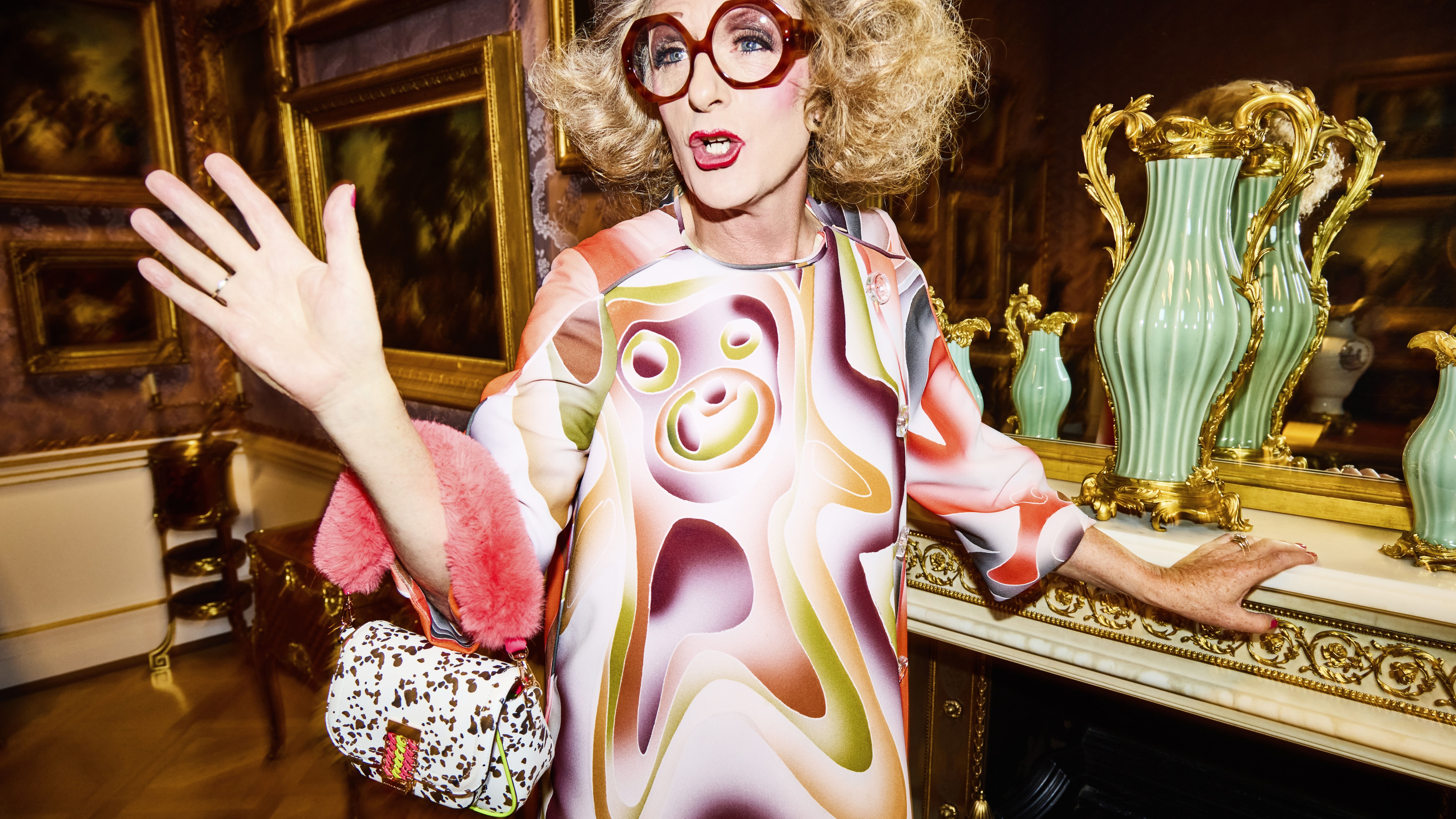
‘I’m not one for naked cherubs and goddesses throwing thunderbolts or whatever. That's not my kind of thing,’ explains Sir Grayson Perry at the opening of his new exhibition. Wandering around Hertford House in London — in which the Wallace Collection is located — he describes how at times he marvelled at the craftsmanship, but found many pieces ‘cloying’. It was the discovery that self-taught outsider artist Madge Gill (1882–1961) had exhibited there in 1942 that became a trigger.
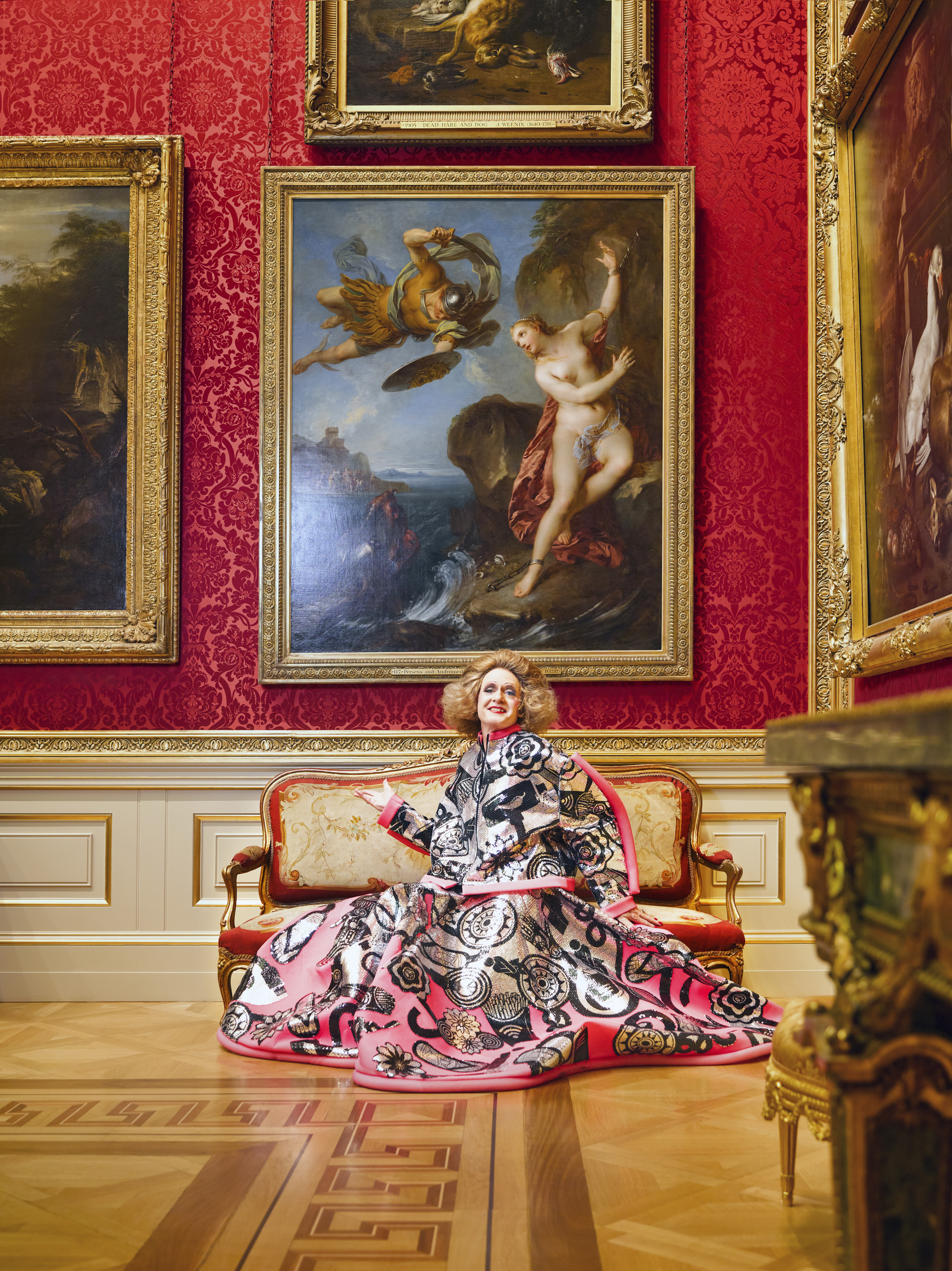
'This is just ‘me having enormous fun at the Wallace Collection,' says Sir Grayson Perry
‘I came up with this idea that I needed to invent an artist who loved the Wallace Collection beyond measure. So I wrote her biography: Shirley Smith. As a child, she had a very rough time in the East End, she was homeless and she ended up here in a traumatised state one day and collapsed at the Wallace Collection and awoke in Heaven, she thought. And so she became obsessed and thought she was the rightful heir. She was the Honorable Millicent Wallace and she would inherit the Wallace Collection. This is a sort of a collaboration between me, her and the Wallace Collection in many ways. It gave me permission to play. As an artist, especially as you get older, you've got to give yourself permission to play.’
Delusions of Grandeur is the Wallace Collection’s largest ever contemporary exhibition, featuring more than 40 new works in the widest variety of techniques Sir Grayson has yet used in a single show. They include ceramics, tapestries, furniture and AI photographs, plus a rug, a gun, a bedspread and a helmet, and reflect on themes of gender, authenticity, connection and identity.
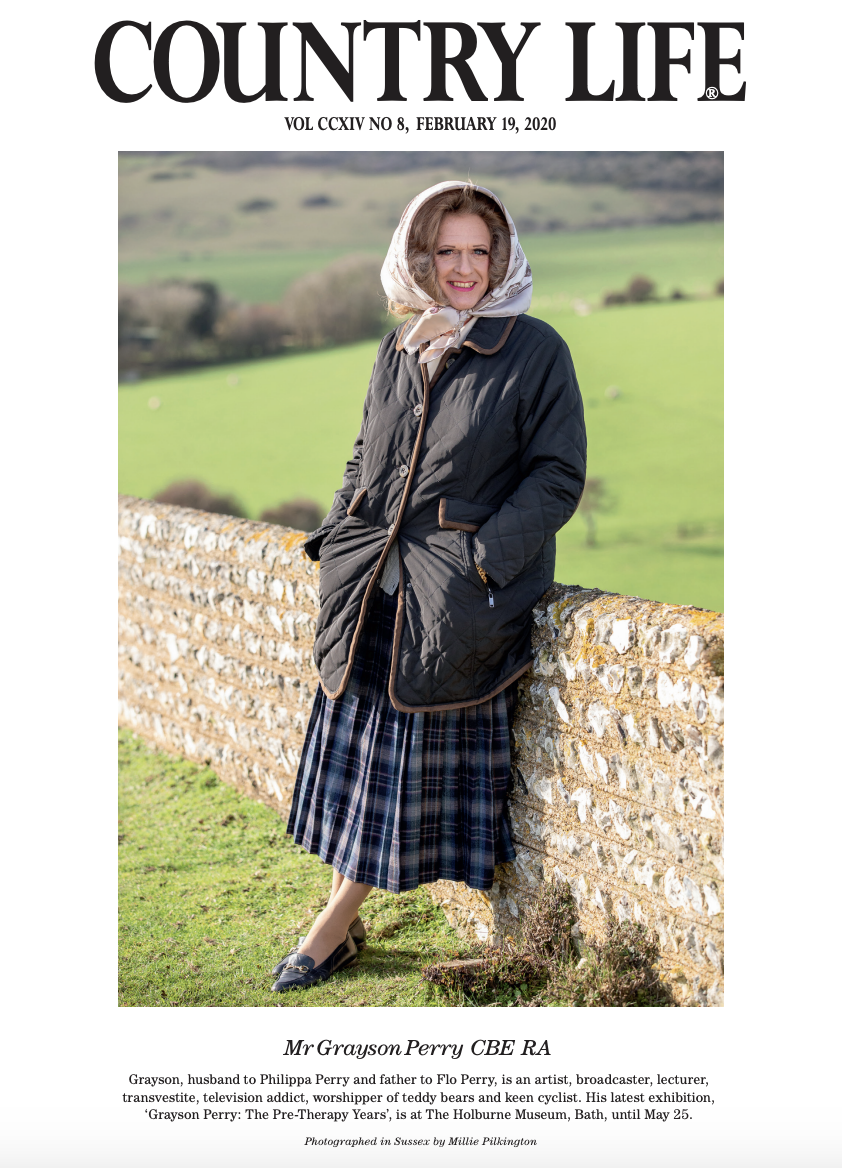
When we visit collections and exhibitions, ‘what we're looking for in many ways is ourselves,’ explains Sir Grayson, who once appeared on the Country Life Frontispiece (above) — a noteworthy detail, albeit not the artist’s most prominent claim to fame. In walking around Hertford House, he says, ‘we have an unconscious dialogue with all the works,’ because whatever you see and love is ‘saying something to you about yourself — it's your unconscious thing’. Within the space of 20 minutes, he defines himself as an ‘amateur anthropologist’, a ‘detail freak’, a tongue-in-cheek ‘pillar of the establishment’ and a ‘travelling minstrel’. He is the Man of Stories (the name of his Neo-Rococo ceramic and mixed media sculpture) of his own creation. ‘We've all got something within us that could probably be pathologised,’ he adds, in reference to his etching A Tree in a Landscape, which uses Wallace Collection miniatures to create Shirley’s ‘family tree of mental health diagnoses’.
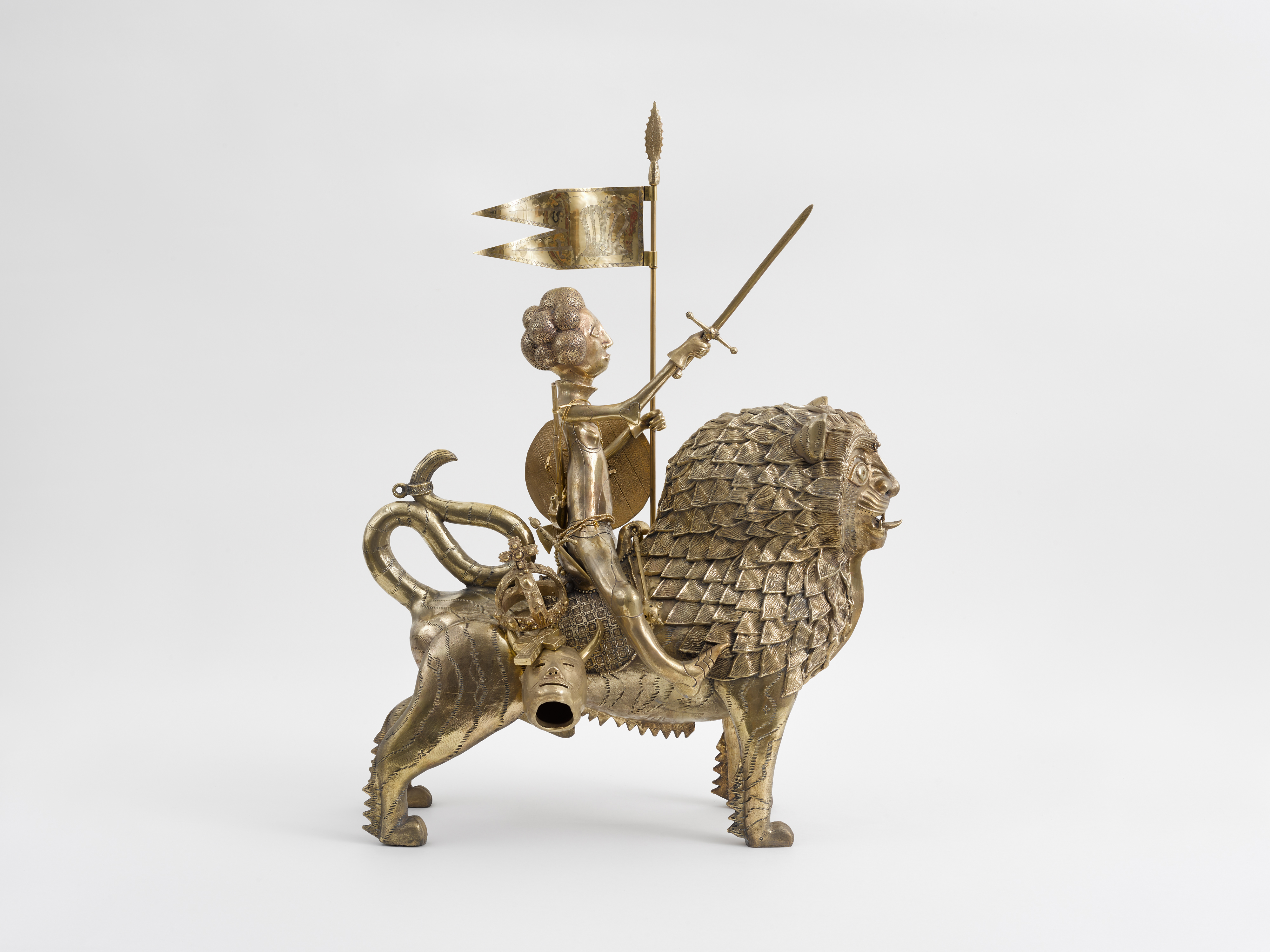
'Saint Millicent Upon Her Beast' in brass
In Shirley’s bedroom, with its pleasingly garish, pink wallpaper designed in collaboration with Liberty, the artist imagines her making a ‘bedspread as a talismanic protection for her body and her sense of identity. At night she would lie under it, safe in the knowledge that she was the desirable heiress, the Honourable Millicent Wallace’. Opposite is an extraordinary portrait of Shirley/Millicent as ‘the essence of regal elegance. She is desirable, stylish, rich, confident and a crack shot’. A selection of drawings from Shirley’s sketchbook provide further detail into her imagined childhood at Hertford House.
Covering an entire wall and guarded by two flanking Serious Ceramic busts, which look as though they are about to burst out laughing — and why wouldn’t they? This is the funnest exhibition London has seen in recent memory — an extraordinary Fascist Swing tapestry takes inspiration from Fragonard’s famous painting of 1768. Sir Grayson gleefully explains how The Swing is probably the Collection’s most famous painting ‘and the epitome of most people’s idea of Rococo’ with all its decadent ‘ruling class… just before they’re all going to get their heads chopped off. Rococo represents this sort of rotting kind of celebration of something that is going to die pretty soon’. Shirley’s interpretation contains anger ‘about the fact that she was disinherited… But mainly I thought it would be funny just to throw in the word fascist, because that's the go-to insult of the activist artist’.
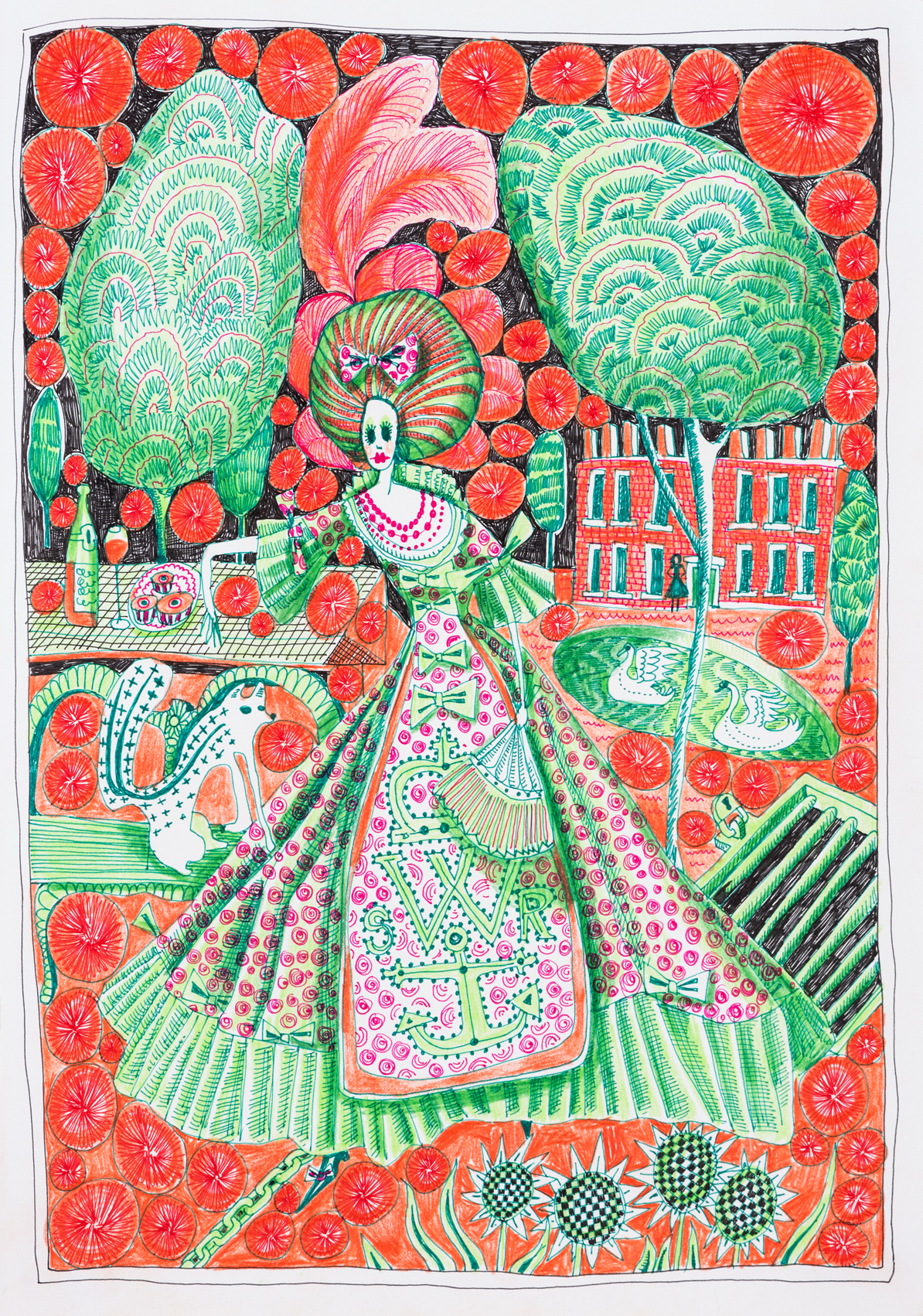
'Untitled', from a selection of drawings by Shirley Smith
Of course, there’s sadness here in Shirley’s breakdown, delusion and evident loneliness. Her embroidery and mixed media Hospital Queen, created during her stay at a mental-health hospital in Essex, manages to draw comparisons between François Boucher’s Madame du Pompadour (1759), from which it is inspired, and the nightmare-worthy Gladys created by Phoebe in Friends (a 3D half-bald mannequin that will probably climb out of the frame to murder you in your sleep). Shirley may be an extreme case, but she’s relatable. And when it comes to self-reflection, sad and funny go hand in hand.
Exquisite houses, the beauty of Nature, and how to get the most from your life, straight to your inbox.
Mostly, Sir Grayson says he delights in ‘making stuff, spending hours drawing or sculpting or potting or sewing even’, creating his collection of ‘sensuous things’. He references a piece he did a few years ago called This Pot Will Reduce Crime by 29%. ‘Can I solve the world's problems with a paintbrush?’ he asks. The answer is no. This is just ‘me having enormous fun at the Wallace Collection. It's a celebration’.
Delusions of Grandeur runs from March 28 to October 26 at the Wallace Collection, Hertford House, London W1. Concurrently (March 28 to April 17), Sotheby’s is staging a selling exhibition of photographs of Sir Grayson by Richard Ansett. These include images from an extraordinary shoot at Hertford House, a day that began with the artist exclaiming ‘THE WIG THE WIG!’, when he saw Mr Ansett had turned up in an Audi S5 convertible, and ended with the photographer remarking ‘Grayson takes fun very seriously’.
Annunciata is director of contemporary art gallery TIN MAN ART and an award-winning journalist specialising in art, culture and property. Previously, she was Country Life’s News & Property Editor. Before that, she worked at The Sunday Times Travel Magazine, researched for a historical biographer and co-founded a literary, art and music festival in Oxfordshire. Lancashire-born, she lives in Hampshire with a husband, two daughters and a mischievous pug.
